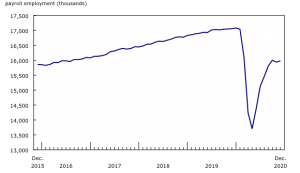
There are reports the provincial government could announce as soon as Friday that Niagara will be moved out of the grey zone to the less restrictive red. That move is supported by 11 of Niagara’s mayors — only Niagara-on-the-Lake Lord Mayor Betty Disero didn’t sign on — but is contrary to the advice of public health officials.
Aside from the Niagara Acting Medical Officer of Health and the provincial association of public health units, the Registered Nurses Association, Ontario Medical Association, Ontario Hospital Association and Public Health Ontario (PHO) have all advised the government of Doug Ford not to reopen yet. The Ontario Chief Medical Officer of Health has also advised that Ontario should get down to 150 ICU patients before reopening, which has not been followed.
In the event of a move to Red-Control, retailers, bars, restaurants, and food-service establishments should note that local Section 22 orders will remain in effect.
The GNCC has sought and received clarification from Niagara Public Health on the recent orders.
Today, the Department of Finance released draft legislative proposals that would implement technical amendments to ensure these programs better support the businesses and workers who are facing challenges as a result of the pandemic.
The draft legislative proposals released today would:
- Provide applicants with more flexibility in determining the revenue decline for the wage and rent subsidies for the qualifying period from December 20, 2020 to January 16, 2021.
- Ensure that Lockdown Support is available to an eligible property owner whose tenant is not arm’s length but has a qualifying business at the property that is subject to a lockdown and must shut their doors or significantly restrict their activities under a public health order.
The Canada Revenue Agency will administer the subsidies on the basis of these draft legislative proposals.
Details on the measures proposed today are available in the backgrounder issued with today’s announcement.
Today, the Minister of Employment, Workforce Development and Disability Inclusion, Carla Qualtrough, introduced Bill C-24, to increase the maximum number of weeks available to workers through EI regular benefits. The proposed legislation would provide workers with up to a maximum of 50 weeks for claims that are established between September 27, 2020 and September 25, 2021.
In addition, self-employed workers who have opted in to the EI program to access special benefits would be able to use a 2020 earnings threshold of $5,000, compared to the previous threshold of $7,555. This change would be retroactive to claims established as of January 3, 2021 and would apply until September 25, 2021.
As part of this proposed legislation, all international travellers who need to quarantine or isolate upon their return to Canada, including people returning from vacation, would be made ineligible to receive support from any of the Canada Recovery Benefits for the period of their mandatory quarantine or isolation. These changes would be retroactive to October 2, 2020.
As announced on Feb. 19, 2021, the Government will be increasing the number of weeks available under the Canada Recovery Benefits through regulations. This includes:
- increasing the number of weeks available under the Canada Recovery Benefit (CRB) and the Canada Recovery Caregiving Benefit (CRCB) by 12 weeks, extending the maximum duration of the benefits from 26 weeks to up to 38 weeks; and,
- increasing the number of weeks available under the Canada Recovery Sickness Benefit (CRSB) from the current 2 weeks to 4 weeks.
To ensure employees in the federally regulated private sector can access the proposed additional weeks of CRCB and CRSB without the risk of losing their jobs, the maximum length of the leave related to COVID-19 under the Canada Labour Code will also be extended.
Employers should be aware that employees can be brought back at reduced hours/pay and still qualify for EI payments. Detailed can be found here.
Ontario’s public health measures have decreased COVID-19 transmission and have slowed down the spread of variants of concern, according to new modelling released by the province’s Science Table Thursday. But that good news comes with a caveat — according to that group of scientists, variants of concern, like B117, are still continuing to spread and cases, hospitalizations and ICU admissions will likely increase soon.
Still, the province’s latest projections come with a less dire tone than in recent weeks, with a smattering of positive news amongst warnings to remain vigilant. Variants of concern continue to spread quickly in Ontario, the data shows, and are projected to likely make up 40 per cent of the province’s cases by the second week of March. The modelling also noted a new grim milestone with more than 1,886 deaths reported in the second wave, surpassing 1,848 deaths in the first.
Meanwhile, Ontario reported another 1,138 cases of COVID-19 on Thursday, as the number of active infections provincewide increased for the first time in more than six weeks. The upward climb was small — in total, there were just 21 more active cases yesterday than the day before (10,071 compared to 10,050) — but it could be notable, given that until now infections marked as resolved have outpaced newly confirmed cases every day since Jan. 12. The new cases in today’s update include 339 in Toronto, 204 in Peel Region and 106 in York Region.
As part of its effort to increase the level of communications and engagement with Lincoln residents and businesses, the Town has developed a new digital communication and engagement platform called Speak Up Lincoln.
Speak Up Lincoln will enhance existing engagement opportunities and provide a place where community members can get updates and provide input on important Town of Lincoln projects and initiatives, at a time and place that is convenient for them.
Community members are invited to share comments on specific projects and identify which areas or topics they would like to learn more about and provide feedback on. More projects will be added to the site in line with corporate and Council priorities, annual budgets and the need for public feedback.
The Niagara Peninsula Conservation Authority (NPCA) and the Township of Wainfleet are pleased to announce the launch of a public awareness campaign that aims to engage the community and seek their feedback on the Wainfleet Wetlands and Quarry Conservation Area.
The Wainfleet Wetlands and Quarry Conservation Area Public Awareness Campaign consists of various phases, with the first focusing on an anonymous survey aimed at residents of Wainfleet and other nearby locals who may have visited the property in the last 12 months. With preparations for the upcoming season well underway, the survey will enable both organizations to learn more about community use and future aspirations for the site, gauge interest in stewardship and engagement activities, and explore short-term and long-term solutions.
The survey will be followed by a Water Safety Blitz in May, to provide community members with information on permitted and responsible uses of the conservation area, and the potential dangers of swimming in undesignated and unmonitored bodies of water. Upon thorough analysis of the feedback provided through the public survey, the NPCA and Township of Wainfleet will continue to engage the community with stewardship opportunities and next steps related to the management of conservation area.
The survey is now open and will remain available until March 22, 2021. Interested participants are encouraged to visit the Get Involved NPCA portal to complete the survey, learn more about this initiative, and reach out with any questions they may have.
For more information on the Niagara Peninsula Conservation Authority and Wainfleet Wetlands & Quarry Conservation Area, visit www.npca.ca. Follow Facebook and Twitter for more updates.
The City of Niagara Falls approved a Secondary Plan for the GO Transit Station Area in 2018 through Official Plan Amendment No. 125. The Secondary Plan policies aim to support transit supportive development and to create a walkable neighbourhood with a mix of uses, a range of housing choices and new employment opportunities.
The City has initiated an amendment to the City’s Zoning By-law to implement the policies of the Secondary Plan within the area bounded by Bridge Street to the north, Morrison Street to the south, River Road to the east and Victoria Avenue to the west.
The draft amendment proposes to replace the current Central Business Commercial (CB) Zone with CB1, CB2, CB3, CB4, CB5 and CB5 zones. The amendment includes:
- The continuation of all current uses under the CB Zone, with the addition of a ‘vacation rental unit’ use for all zones;
- A maximum retail floor area of 930 sq. m. (10,010 sq. ft.) in all CB zones;
- Ground floor residential uses permitted on the ground floor within the CB3 – CB6 zones and within some areas of the CB2 zone;
- Varying height restrictions for each zone: 4 storeys for CB1; 6 storeys for CB2, 8 storeys for CB3, 10 storeys for CB4, 14 storeys for CB5 and 20 storeys for CB6;
- Parking requirements at a rate of 0.75 spaces per dwelling unit, no minimum parking requirement for non-residential uses, and new requirements for bicycle parking;
- New built form regulations regarding screening requirements for roof top materials and ground level parking (structure or ground level); and,
- New definitions for amenity area, licensed establishment, nightclubs, and bicycle parking.
Digital copies of plans and documents submitted with the application may be obtained on the Planning Department Current Applications Webpage. Businesses in the affected zone are encouraged to share their thoughts. Niagara Falls City Council can be contacted here.
A remote electronic public meeting will be held on March 2nd, 2021 at 4:30 pm.
The Protecting Ontario Elections Act, 2021 would, if passed, help guard against threats such as the long-term impacts of the COVID-19 pandemic, under-regulated third-party advertising, irregular campaign spending and collusion.
19 legislative amendments have been proposed to:
- increase advance polling days from five to ten,
- double the amount individuals can donate to a candidate, constituency association, leadership contestant or party from $1,650 to $3,300 per year
- extend third-party advertising spending limits from six to 12 months before an election period and introduce a definition of collusion
- clarify the rules that allow Members of Provincial Parliament to maintain individual social media accounts before, during and after a writ period, as well as pave the way for the legislature to set other social media rules.
Elections Ontario has reported that the scale of third-party advertising in Ontario is greater than at the federal level, and Ontario is the only province in Canada where third-party spending is counted in the millions of dollars, rather than in the thousands. In 2018, third parties spent over $5 million during the election period and the six months prior to the election.
The proposed reforms follow the Ontario legislature’s 2016 decision to ban corporate and union donations to political parties.
The full reforms can be read here.

Payroll employment increases in December after a dip in the previous month
The number of employees receiving pay or benefits from their employer—measured in the SEPH as payroll employment—rose by 44,200 (+0.3%) in December, after decreasing by 64,500 (-0.4%) in November. The largest increases were in health care and social assistance, and transportation and warehousing. December gains were tempered by declines in accommodation and food services; retail trade; and arts, entertainment and recreation. The total number of employees receiving pay or benefits from their employer was 1.1 million (-6.2%) lower than in February 2020.
The December LFS—for the week of December 6 to 12—recorded a decrease of 53,000 (-0.3%) in the number of people with a job or business, with the largest declines in accommodation and food services; “other services”; and information, culture and recreation. Employment declines were in self-employment and part-time work.
Average weekly earnings were $1,112 in December, little changed compared with November.
On a year-over-year basis, earnings grew 6.4%, as job losses since February have been concentrated among hourly paid—and largely lower-paid—employees. In December, the number of hourly paid employees was 8.9% below its pre-COVID-19 level, compared with a gap of 2.8% for salaried employees.
In December, payroll employment rose in the services-producing sector (+0.2%; +31,900), nearly offsetting the loss in the previous month. December gains were spread across a number of sectors but largest in health care and social assistance (+22,400), and transportation and warehousing (+10,500). At the same time, there were notable losses in accommodation and food services (-32,900); retail trade (-5,600); and arts, entertainment and recreation (-3,600).
Employment in the goods-producing sector was little changed for a second consecutive month. Prior to this, employment in the goods-producing sector had been trending up since May.
In December, payroll employment in the services-producing sector and the goods-producing sector was 6.5% and 4.6% below pre-COVID-19 levels, respectively.
Reading recommendations
Jim Wilson, Canadian HR Reporter
The COVID-19 pandemic has had a huge impact on employment in all industries, but the tourism sector has been dealt a worse card than many.
“The reality is the industry took a very, very large hit, very early. And we do know it’s going to take a long time to recover, longer than the economy overall,” says Philip Mondor, CEO of Tourism HR Canada.
“Once it was announced that there was a global pandemic, we lost about a third of our workforce or 880,000 workers within 10 weeks. And still today, we are short of about 500,000 of those workers. So you can anticipate that there’s been a lot of impact as a result of all these displaced people and what it means in terms of their jobs and the businesses.”
But employers in the tourism industry have not left these workers out to dry, according to Mondor.
“For some who were furloughed or were not in their jobs anymore, most of the things that businesses did are to get in touch with them and to provide supports. In recent months, it’s been much more around mental health supports and attaching them to resources to help with issues of that type.”
Zaria Gorvett, BBC Future
There’s no evidence that any of the current Covid-19 vaccines can completely stop people from being infected – and this has implications for our prospects of achieving herd immunity. There are two main types of immunity you can achieve with vaccines. One is so-called “effective” immunity, which can prevent a pathogen from causing serious disease, but can’t stop it from entering the body or making more copies of itself. The other is “sterilising immunity”, which can thwart infections entirely, and even prevent asymptomatic cases. The latter is the aspiration of all vaccine research, but surprisingly rarely achieved.
Mark Mortensen & Martine Haas, Harvard Business Review
The pandemic has upended much about how we work, and what comes next is neither the death of the office nor a return to the way things were. Instead, our new reality will be hybridity: working with employees who are co-located in the same physical space as well as employees working remotely.
Hybridity promises organizations the benefits of remote working (increased flexibility, reduced carbon footprint, labor-cost optimization, and increased employee satisfaction) alongside the critical strengths of traditional, co-located work (smoother coordination, informal networking, stronger cultural socialization, greater creativity, and face-to-face collaboration). But hybridity is also inextricably tied to power — it creates power differentials within teams that can damage relationships, impede effective collaboration, and ultimately reduce performance. To lead effectively in a hybrid environment, managers must recognize and actively manage the two distinct sources of power that can impede — or facilitate — hybrid work: hybridity positioning and hybridity competence.
Niagara COVID status tracker
Niagara’s most up-to-date COVID statistics, measured against the targets for the various stages of the Ontario COVID-19 Response Framework, are presented below. This does not predict government policy, but is offered to give you an idea of where Niagara is situated and how likely a relaxation (or further restrictions) may be. These data are drawn daily from Niagara Region. The Grey-Lockdown level does not have its own metrics, but is triggered when the COVID-specific measurements in a Red-Control region have continued to deteriorate.
| December 18 | December 25 | January 1 | January 8 | January 15 | January 22 | January 29 |
| Reproductive number | 1.4 | 1.8 | 1.4 | 1.1 | 1.0 | 0.7 | 0.9 |
| New cases per 100,000 | 101.2 | 267.3 | 469.8 | 575.8 | 507.1 | 295.5 | 250.6 |
| New cases per day (not including outbreaks) | 60.7 | 178.7 | 311.7 | 376.9 | 325.4 | 182.7 | 145.7 |
| Percent of hospital beds occupied | 97% | 95.2% | 98.2% | 103.2% | 104.5% | 103.6% | 106% |
| Percent of intensive care beds occupied | 78.8% | 77.3% | 87.9% | 87.9% | 90.9% | 89.4% | 93.9% |
| Percentage of positive tests | 6.1% | 15.6% | 28.1% | 28.6% | 26.6% | 21.2% | 16.2% |
Definitions:
- Weekly Incidence Rate: the number of new COVID-19 cases per 100,000 people per week
- Percent Positivity: the number of positive COVID-19 tests as a percentage of all COVID-19 tests performed
- Rt: the reproductive rate, or the number of people infected by each case of the virus
Information on government grants, resources, and programs, policies, forms, and posters for download and use, are available here.The GNCC is here to support you. Contact us with any questions you have.






